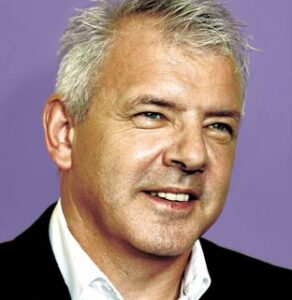Profiles in Accountable Innovation
Random acts of innovation rarely reap rewards. For any initiative to deliver real value, it must be connected to the larger organizational cause. “Investments in innovation are nebulous unless you tie them to business strategy,” says Zack Gipson Share on X, chief innovation officer, United Services Automobile Association (USAA), San Antonio. And organizations must hold innovation executives accountable for making that link.
We spoke with three chief innovation officers about how the long-term strategies of their organizations drive the how, what and why of their decisions.
Neal Sunners, SVP of Innovation and Emerging Technology, and International CIO, Avis Budget Group, Guildford, England
It can be easy for innovation teams to get distracted by new technology. But if it does not align with the company strategy or meet the needs of customers, it does not add value—or meet the goals of the innovation group at Avis Budget. “I am much more impressed by what the technology enables versus what it is,” says Mr. Sunners.
He admits he was skeptical when he first took the job: “We didn’t think of ourselves as innovators, and we didn’t take a lot of risks,” he says. And he was not convinced an innovation group could change that.
Eighteen months later, he has a different view—but it has been a journey. Mr. Sunners spent his first year defining what innovation means to Avis Budget. It was not about being cool or simply implementing the latest tech. Instead, Mr. Sunners realized that by thinking in terms of disruptive innovation, his team could transform the car rental customer experience and improve the working life of Avis Budget employees. Those two goals became Mr. Sunners key responsibilities within the organization, defining every step he and his team have taken.
“If an organization is really interested in change, we have to recognize people for being innovative rather than for delivering operational efficiencies. That’s how you make innovation part of what people do every day.”
—Neal Sunners
“We are making broad changes that have a real impact,” he says. For example, to help improve employee satisfaction, Mr. Sunners and his team put the rental process on a tablet, allowing Avis Budget staff to serve customers outside of the tiny airport kiosks. “Our staff can now deal with customers in line, which reduces queue times during high traffic periods,” he says.
When it comes time to share ideas, he quietly develops prototypes. Mr. Sunners says doing so better demonstrates the work his team is doing. “A single prototype is worth hours of explanation,” he says. When his team came up with the idea of putting the rental process on a tablet, for example, it built a prototype tablet and presented it to the chairman and COO. “In five minutes he made a booking and immediately saw the benefits it could bring to the company.” That kind of enthusiasm cannot be garnered with a PowerPoint presentation, he says. “People have to be able to see and feel the change before they will embrace it.”
Delivering ideas, products and services that improve both the customer and employee experience is a lofty goal. So Mr. Sunners taps employees from across the company to find out where the pain points are—and for suggestions of where Avis Budget could improve. “If someone has a good idea, and solid use case, we go for it,” he says. Recently, a junior IT employee suggested the innovation team create a mobile alert system for customers whose flights are delayed to let them know that the car will be waiting for them. “It was a simple step to remove stress for customers,” he says. Avis Budget already tracks flight information related to customers, so it had access to the data and the back-end infrastructure already in place. The team just needed to add an alert.
The true success of the idea comes down to customer satisfaction—and the signs are promising. Initial tests were so good the team took it to market in Europe in 2016, with plans to roll it out worldwide in 2017. The app has already won the company’s Chairman’s Award, providing some well-deserved recognition to the IT employee who first came up with the idea.
“It’s important to over-celebrate early wins because it encourages everyone to innovate,” Mr. Sunners says. “If an organization is really interested in change, we have to recognize people for being innovative rather than for delivering operational efficiencies. That’s how you make innovation part of what people do every day.”



